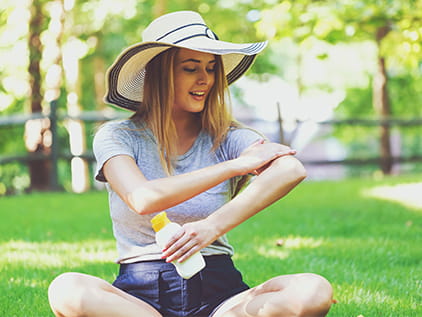Check out the smart way to use smartphone technology to detect skin cancer
Smartphones are quickly becoming America's pocket healthcare guides. We have apps for tracking calories, monitoring blood pressure, applying first aid, determining proper drug dosage and potential side effects – even detecting skin cancer. Yes, there's an app for that, too.
While they are not widely used (yet), skin cancer applications that aim to detect and diagnose skin cancer are getting attention in Kansas City and around the world. Powered by image recognition technology, these apps let you snap a selfie of a suspicious-looking mole or lesion, upload the photo and receive an assessment in seconds.
Depending on the app you choose, the results can range from "problematic" to "low, medium or high-risk" to "okay" or "atypical."
"It's exciting technology if further research supports its utility," says Gary Doolittle, MD, medical oncologist at The University of Kansas Health System and medical director for the Center for Telemedicine and Telehealth at the University of Kansas Medical Center.
The price of this new technology varies. Some skin cancer detection apps can be downloaded for free. Others charge $4.99 for unlimited evaluations, $5 per evaluation or $50 to receive a certified diagnosis from a medical professional of the user's choice.
But are they accurate?
A report in the April 2013 dermatology issue of the Journal of the American Medical Association (JAMA®) studied 4 smartphone apps and found their performance to be "highly variable." In fact, the report found that "3 out of 4 smartphone applications incorrectly classified 30% or more of melanomas as unconcerning."







